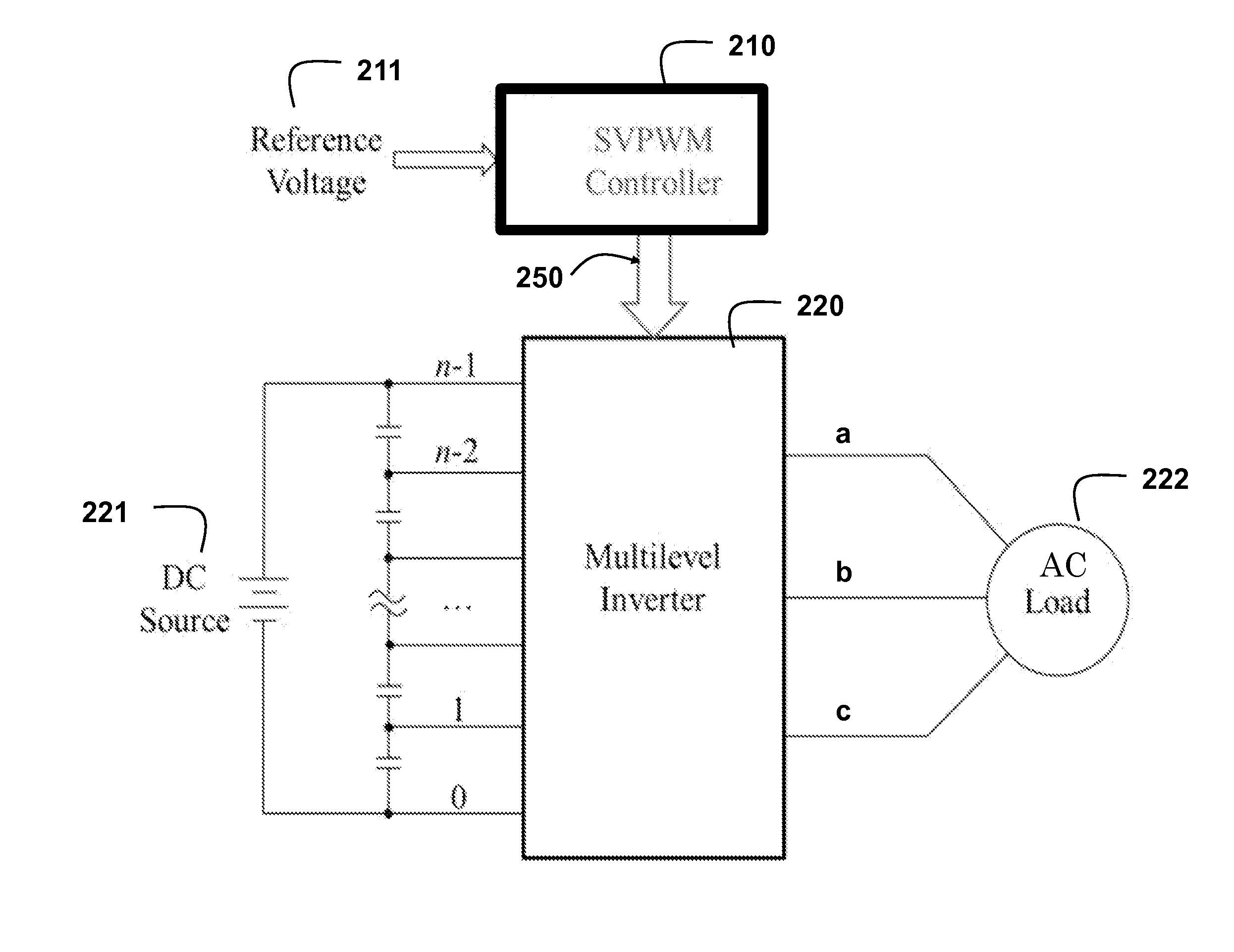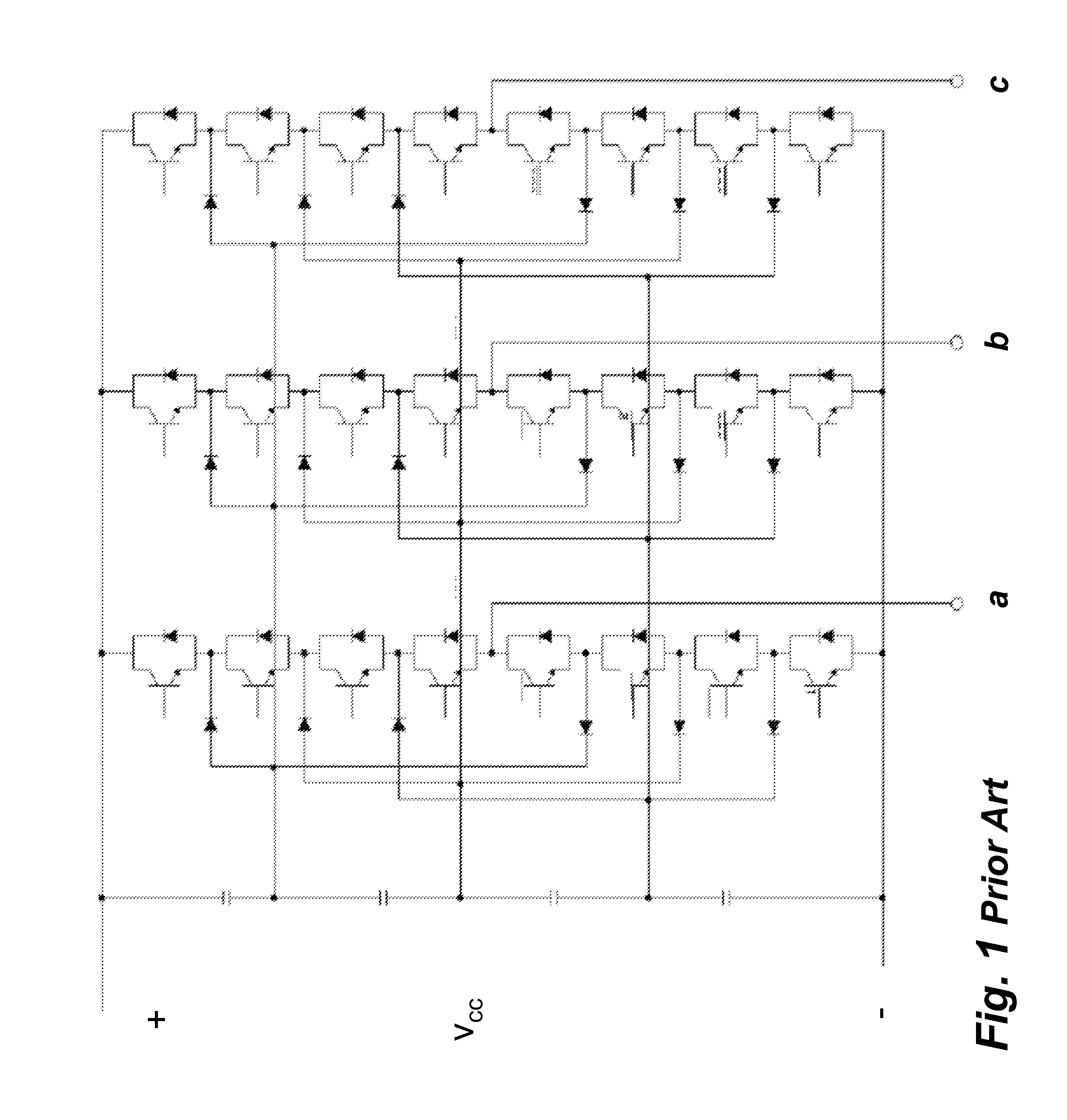Method to Generate Multilevel Inverter Modulation Control Signals
a multi-level inverter and modulation control technology, applied in the field of power inverters, can solve the problems of significant computation complexity, power semiconductors that cannot withstand reduced voltages, and cannot employ conventional vsi in the high power range. achieve the effect of simple and systematic approach
- Summary
- Abstract
- Description
- Claims
- Application Information
AI Technical Summary
Benefits of technology
Problems solved by technology
Method used
Image
Examples
Embodiment Construction
[0022]FIG. 2 shows a space vector pulse width modulation (SVPWM) controller 210 for a neutral-point clamped (NPC) inverter 220. The controller take a reference voltage 211 as input. The outputs of the SVPWM are space vector modulation signals a, b, and c 250, where a, b, and c correspond to the three phase of the AC signal. The inverter is connected between a DC source 221 and an AC load 222. The source can have N levels (0, 1, . . . , n−1). In contrast to the prior art where the number of levels is generally 2, the number of levels that can be specified for the inverter according to the embodiments can be arbitrary, e.g., 5, 7 or 25.
[0023]Space Vector Pulse Width Modulation (SVPWM) in 3 Phase Coordinate System
[0024]The most commonly used coordinate system to represent a vector in a two dimensional, or three dimensional space is a Cartesian coordinate system, where a vector V can be decomposed into the summation of vectors that are orthogonal to each others, i.e., v={right arrow ove...
PUM
 Login to View More
Login to View More Abstract
Description
Claims
Application Information
 Login to View More
Login to View More - R&D
- Intellectual Property
- Life Sciences
- Materials
- Tech Scout
- Unparalleled Data Quality
- Higher Quality Content
- 60% Fewer Hallucinations
Browse by: Latest US Patents, China's latest patents, Technical Efficacy Thesaurus, Application Domain, Technology Topic, Popular Technical Reports.
© 2025 PatSnap. All rights reserved.Legal|Privacy policy|Modern Slavery Act Transparency Statement|Sitemap|About US| Contact US: help@patsnap.com



